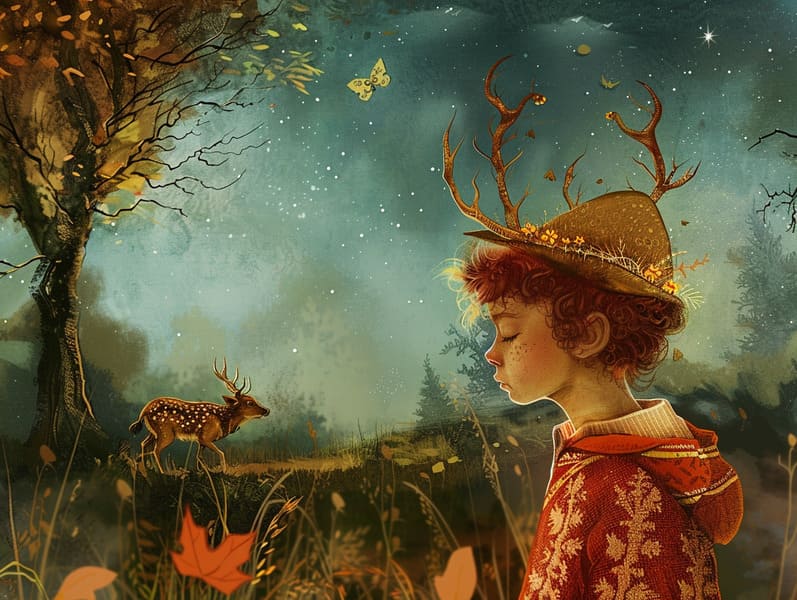A Brief History of Traditional Fairy Tales and Their Lasting Majesty.
A Brief History of Traditional Fairy Tales and Their Lasting Majesty.
Blog Article

Fairy tales have historical significance. These stories have been transmitted from one generation to the next well before they were ever published. They sprang from a variety of traditions, including Asian traditions. They were initially conveyed among adults, often carrying themes and messages relevant to the societal norms and beliefs of the time.
The Brothers Grimm, Jacob and Wilhelm, were among the first to gather many of these beloved tales. Their anthology, "Grimm's Fairy Stories," included stories like "The Little Glass Slipper," "Hansel and Gretel," and "Little Snow White," which have since become mainstays in the world of children's fairy tales. Similarly, Hans Andersen's delightful stories, such as "The Little Mermaid," and "The Duckling that Could," have touched hearts worldwide, establishing their place in the pantheon of classic fairy tales.
Despite their age, fairy tales remain as applicable as ever, especially as kids' bedtime tales. These magical stories are now available in various formats, including vibrantly illustrated books, fantastical animations, and digital fairy tales.
Their lasting presence can be linked to several enchanting factors:
Key Lessons: Timeless fairy tales often provide important moral lessons. Fairy tales like "The Boy Who Cried Wolf" teach the importance of sincerity, while "The Tortoise and the Hare" show the merits of perseverance and humility. These stories offer young readers clear distinctions between good and bad, shaping their moral compass in a mild yet lasting way.
Warmth and Understanding: Old fairy tales frequently present heroines facing obstacles and hardships, urging readers to resonate with their struggles and encourage their triumphs. For instance, "The Tale of Beauty and the Beast" reveals the significance of seeing beyond looks to comprehend the real person of a person, enhancing empathy and knowledge.
Cultural Understanding: Many classic fairy tales are deeply ingrained in the cultural contexts from which they came. Delving into these stories can provide enlightening views into different customs, cultivating a sense of cultural respect and comprehension.
Imagination and Creativity: The extraordinary elements in ancient fairy tales—mythical creatures—ignite children’s fantasies. These stories carry readers to fantasy realms, invigorating creative dreams and a sense of magic that continues a lifetime.
Traditional fairy tales are not only captivating but also edifying. They provide fantastical tools in fostering various cognitive and affective skills in kids. When ancient fairy tales are spoken, they promote speaking abilities by bringing new phrases and intricate sentence structures. This practice also enhances auditory skills and mental focus, as young ones listen intently, excited to see what happens next.
Furthermore, find it here analyzing the themes and characters of timeless fairy tales can develop critical thinking and evaluative skills. Young ones are educated to pinpoint patterns, forecast, and know cause and effect. These talks also assist the young reveal their thoughts and feelings, fostering their emotional intelligence.
In today’s digital age, the existence of online fairy tales has made these narratives more within reach than ever. Online platforms and web apps share comprehensive collections of popular fairy tales that can be explored or played anytime, anywhere. Fairy tales spoken are particularly prevalent, sharing an entertaining method for young readers to be a part of these enchanting tales. Audio stories and narrated videos bring characters and settings to life, often supported by fantastical musical scores and melodies that augment the tale experience.
The enduring charm of ancient fairy tales lies in their ability to transform to modern days while keeping hold of their core messages. Contemporary takes of these narratives often introduce more diverse figures and modern settings, making them understandable to today’s audience. However, the underlying themes of gallantry, benevolence, and rightness remain unchanged, continuing to reach readers of all ages.
Old fairy tales also offer a sense of solace and recognition. They provide a well-ordered narrative with a obvious beginning, middle, and end, often wrapping up with the conclusion of conflicts and the triumph of morality over immorality. This certainty can be calming for young readers, distributing a sense of solidity in an variable world.
Classic fairy tales continue to captivate and guide new generations, maintaining their loveliness and importance in modern society. As kids' bedtime tales, they showcase a perfect blend of delight and instruction, developing moral values, empathy, and creativity. The prevalence of internet fairy tales and the prevalence of fairy tales told out loud ensure that these old fairy tales remain acquirable to new generations.
By holding onto and broadcasting these fairy tales, we continue to appreciate the rich tapestry of lore and cultural heritage. Whether you are accessing a gorgeously illustrated book, enjoying a cyber collection, or listening to an sound book, the captivation of bedtime fairy tales is always within reach. These fairy tales convey of the consistent strength of storytelling and its ability to bring us together across epochs and places.
No matter if you are perusing a vibrantly illustrated book, discovering a cyber collection, or listening on an read-aloud story, the delight of Grimm's fairy tales is always within reach.
These fairy tales highlight of the persistent strength of storytelling and its ability to link us across generations and cultures, making a tie that fascinates and enlightens alike.